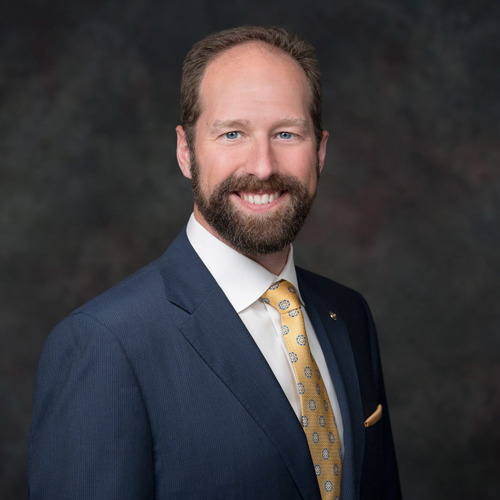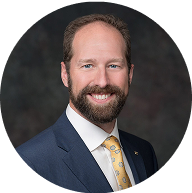Real Question from a Federal Employee
As I approach retirement, what are the safest and best TSP investment and allocation strategies, any suggestions? – Andrew
When it comes to retirement planning, one of the biggest questions federal employees face is: How should I allocate my Thrift Savings Plan (TSP) to make sure I don’t run out of money?
The TSP is a powerful tool for building wealth and creating income security in retirement. With just five core funds (plus Lifecycle Funds that mix them), your options may seem limited, but how you allocate between them makes a big difference in protecting your retirement lifestyle.
There’s No Such Thing as “Risk-Free”
When we talk about “safest” investments, it’s important to remember: every choice carries some risk.
- The G Fund is often considered the safest because it can’t lose value. But the risk here is inflation – the G Fund has historically lagged behind inflation, meaning your purchasing power shrinks over time.
- Pensions and Social Security also don’t entirely keep up with inflation. The FERS COLA is reduced by 1% once inflation is over 2%, and Social Security adjustments often fall short.
That means your TSP is the one retirement resource that must outpace inflation to protect your long-term financial security. If all of your money sits in the G Fund, you may avoid market volatility, but you’ll slowly lose purchasing power.
Matching Investments to Time Horizon
A simple rule of thumb:
Any money you’ll need within the next five years should not be in the stock market.
That’s because it can take years to recover from market downturns. For short-term withdrawals, funds like the G Fund provide stability, ensuring that the money is available when needed.
But what about the rest of your retirement? That’s where long-term growth comes in. Allocating some of your TSP into stock funds (C, S, and I) gives you the best chance to beat inflation and stretch your retirement dollars.
The Real Key: Cash Flow Planning
Your retirement spending needs should drive your TSP allocation. How much income will you need from your TSP? When will you need it?
By aligning your withdrawals with your time horizon, you can create a “bucket strategy” that balances stability and growth:
- Near-term withdrawals → safer investments like the G Fund.
- Mid- and long-term needs → growth-oriented funds to keep pace with inflation.
Conclusion
There is no one-size-fits-all TSP allocation. What works for one federal employee may not fit another, depending on pension income, Social Security timing, and personal goals. The most effective strategy is one that matches your cash flow needs with your investment horizon.
Your TSP must serve two purposes: provide stability for short-term spending and create growth to outpace inflation. By balancing these priorities, you can ensure that your money lasts throughout retirement.
If you’re unsure where to start, working with a financial advisor who understands federal benefits can help you put the right plan in place.

ABOUT THE AUTHOR
Micah Shilanski, CFP®, is a distinguished financial planner known for his deep commitment to providing exceptional advisory services to his clients. As the founder of Plan Your Federal Retirement, Micah has dedicated his career to helping federal employees understand and optimize their benefits to ensure a secure and prosperous retirement. His expertise is widely recognized in the industry, making him a sought-after speaker and educator on financial planning and retirement strategies.
Micah’s approach is client-centered, focusing on creating personalized strategies that address each individual’s unique needs. His work emphasizes the importance of comprehensive planning, incorporating aspects of tax strategy, investment management, and risk assessment to guide clients toward achieving their financial goals.Micah Shilanski 00:03
What is the safest way you need to allocate your TSP to make sure you don’t run out of money for retirement? If you’ve ever wondered about that, then stay tuned for this FERS Federal Fact Check. Hi, I’m Micah Shilanski, with Plan Your Federal Retirement. We have a wonderful question that came in from Andrew talking about your TSP, which I love, your TSP. It is a phenomenal tool for building wealth, building that accumulation that you get to live on for retirement. But Andrew writes in and says, As I approach retirement, what are the safest and best TSP, investment allocation strategies? Any suggestions? Now, I love this question for so many reasons. One, my compliance part, but I’m sure doesn’t love it, because they’re like, ah, Micah, you can’t answer that because you don’t know Andrew’s personal situation. And you are 100 percent right, Andrew, I don’t know your personal situation. So I want to talk in concept about things you need to consider, individual recommendations, there’s so many things that vary. Yes, I know there’s only five investment funds in the TSP, not including their whole mutual fund window thing, the G, F, C, S, and I sure there’s an L fund which allocates between those five, but it’s still just five choices. Here’s some things you need to consider. When you say the safest depends on what we mean. There’s no free lunch. Every choice you have has risk with it. Even the G fund has risk. Now. G fund is guaranteed. Can’t go down in value. It’s going to pay an interest rate, right? That’s phenomenal. What’s the risk on the G fund? Inflation! Right? The G fund will not keep up with inflation, because it really hasn’t kept up with inflation over time. That means it’s probably not going to. Let’s say it did. Let’s say the G fund magically kept up with inflation. Okay, great. What about your pension? Is your pension going to keep up with inflation? No, remember, you got that diet COLA with your pension, you’re gonna get 1% less than inflation with a FERS COLA into retirement. Social Security also doesn’t keep up with inflation, so the one tool you have that needs to, not only keep up with, but outperform inflation to protect your purchasing power is your TSP. So by sticking the money in the G fund, it could be the less risky from an investment standpoint, but it’s not the least risky of investments that’s out there, because you need something that’s going to outpace inflation. So this is where I’m going to push back a little bit on the question, or just say, let’s reframe it a little bit, and let’s talk about time horizon. Our basic investment rule, right? This is what we start with. Everyone’s a little different. It’s a really good rule of thumb, any money that you need to spend in the next five years does not belong in the stock market. And you already know why. 2008, 9, 10, 11, 12, took five years to break even. So when you’re thinking about the retirement plan. That’s what I need you to be thinking about. Number one, when are you going to access this money? Just because you’re going to retire within the next five years? I’m not saying, take all of your TSP and stick it in the G fund, not suggesting that, right? If I’m saying, what money are you going to spend? What money are we going to take out of the TSP in the next five years? Okay, maybe that should be in the G fund. So it’s a safer from a volatility standpoint, right? So that money is going to be there, so we can withdraw, but we probably still need to keep some money, or a decent amount of money, long term in this C,S and I. So there’s a whole strategy we put together with clients who are working on one on one and how to apply it, but that’s the start of it. So Andrew, go back and say, let’s look at your spending, look at your cash flow. Cash flows, the heartbeat of retirement, how much money you need, and start allocating it based on when you’re going to need it. The roller coaster is going to be there in so many different ways. Even if you stick everything in the bank, you’re going to have a roller coaster of inflation, right? So it’s going to be there. The question is, what ride do you want to be and what has the best probability of your success. If you need help with that, not to make this a solicitation, but work with a great financial advisor, reach out to our office. We’re happy to chat with you. We’ll walk through step by step what this is going to look like. If you have a question about your federal benefits, then make sure you’re submitting them on our website, at plan-your-federal-retirement.com. Until next time, happy planning.




